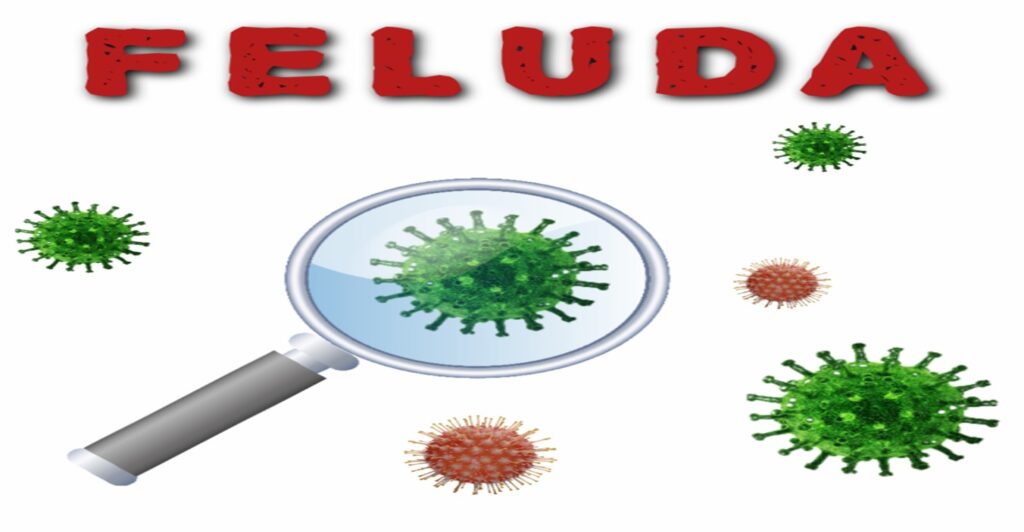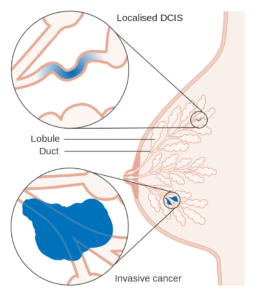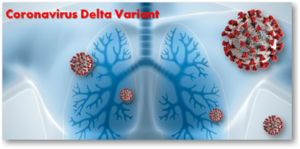When ‘FELUDA’ is in-charge of investigating the novel Coronavirus!

Shuvomoy Banerjee, PhD from Neucrad Health Desk; October 5, 2020
We are all familiar with Satyajit Ray’s famous Bengali Detective character named Feluda for his unmatched investigating successes. Interestingly, Feluda is now in-charge of catching the novel Coronavirus too! However, this time Feluda or rather “FELUDA” is the abbreviation for an assay which is “FNCAS9-Editor-Limited Uniform Detection Assay”.
The discovery of FELUDA is a joint collaboration between the Institute of Genomics and Integrative Biology (IGIB), run by the Council of Scientific and Industrial Research (CSIR) and Tata Sons Company in India. Basically, FELUDA utilizes a sophisticated technology called CRISPR-Cas-9 that helps to detect and confirm the presence of the novel coronavirus in Covid-19 suspected samples. Additionally, FELUDA is able to detect the virus in a short time-span and at a low cost.
Before we go into more details about this kit, let’s learn and revise about the CRISPR-Cas-9 method and its applications.

CRISPR-Cas-9 Gene Editing Technology:
In the year of 1987, Yoshizumi Ishino, a researcher at Osaka University (Japan), first invented the CRISPR-Cas-9 gene-editing technology. Interestingly, the CRISPR-Cas-9 system was observed as a natural in-build mechanism to prevent viral infections in prokaryotic cells. When a virus infects a bacterial cell, the genome of that virus enters the bacterial cell to propagate its number. Scientists found that the bacterial genome consists of a series of small DNA repeat sequences called “CRISPR arrays” and a “spacer sequence” side by side. Caspase-1 and Caspase-2, located in the bacterial cells, cut the spacer sequence situated in the virus genome located next to the viral PAM (Protospacer adjacent motif) sequence (as shown in the figure). Consequently, the viral spacer sequence is integrated with the bacterial CRISPR array sequence.
Following transcription, small CRISPR RNA (cr-RNA) molecules are produced from the CRISPR array genes fused with the viral spacer sequences. Moreover, some tracr RNA are also produced from tracr genes. Subsequently, in the event of a re-infection, such cr-RNAs, tracr-RNAs and the enzyme Caspase-9 (CRISPR Associated-9) combine to form a molecular complex, where tracr-RNA guides to detect specific PAM sequences in the virus genome. Fascinatingly, this molecular complex i.e. CRISPR-Cas-9 is able to cleave the viral DNA with the help of Caspase-9 activities and hence acts as a “Molecular Scissor”.
In fact, with the help of this CRISPR-Cas-9 technology, any DNA sequence can be targeted easily cut out and also other new sequences can be added to that site. Therefore, CRISPR-Cas-9 makes “gene editing” possible in an easy and efficient manner. After the discovery of this groundbreaking molecular technique, CRISPR-Cas-9 was widely used in various branches of medical biotechnology.
Coming back to: How does Feluda work?
According to IGIB Director Dr. Anurag Agarwal, his researchers has used state-of-the-art CRISPR-Cas-9 gene-editing technology in combination with paper-strip chemistry to create the FELUDA test-kit. This kit can easily and efficiently detect the DNA sequences of the SARS-CoV-2 virus from Covid-19 infected patients. Lets see how how the kit works:
- RNA is first extracted from the blood, saliva, nasal swab samples of suspected Covid-19 patients.
- Reverse Transcription PCR (RT-PCR) is performed using the extracted RNA to produce c-DNA.
- The c-DNA is then sampled for laboratory testing and added to the chemical strip to which the CRISPR-Cas-9 system is attached.
- Once the whole reaction is over, it is easy to determine if there is presence of SARS-Cov-2 virus in the sample through a “colorimetric reaction”.

Why is FELUDA an instant Hit?
- Of note, FELUDA only takes 1 hour to do the whole assay!
- Significantly, this method can easily be tested by anyone with basic healthcare training.
- The Feluda method is also very cost-effective, as the sample testing can be performed in any general laboratory setting without the aid of any special instruments. Precisely, FELUDA can be done for only 500 INR.
- As the kit is super-easy to use, FELUDA can be easily available to everyone and fulfill the target of huge sample detections in a very short time.
- Moreover, the FELUDA Kit is quite easy to preserve and does not require any complex instruments to analyze the results after testing.
- Also, results can be visualized with the naked eye, just like the usual pregnancy kit.
- FELUDA method is powerful enough to detect any viral DNA even in the presence of a single mutation which ensures its efficiency as an universal method of detecting SARS-CoV-2 virus.
Researchers and physicians are very excited and eager to use these indigenous Covid-19 detection kit i.e. FELUDA. Moreover, Scientists are speculating that in the near future, FELUDA will become an even more powerful medical tool for detecting not only the novel coronavirus but also other infectious viruses as well.


References:
- Paul D, Naik P, Roy S. Developing a Point-of-Care Molecular Test to Detect SARS-CoV-2 [published online ahead of print, 2020 Jun 19]. Transactions of the Indian National Academy of Engineering. 2020;1-4. doi:10.1007/s41403-020-00127-5
- https://www.tata.com/newsroom/covid19/covid-19-feluda-testing-digital-solutions-tata-sons
- Weissleder R, Lee H, Ko J, Pittet MJ. COVID-19 diagnostics in context. Sci Transl Med. 2020 Jun 3;12(546):eabc1931. doi: 10.1126/scitranslmed.abc1931. PMID: 32493791.
- Zhao X, Markensohn JF, Wollensak DA, Laterza OF. Testing For SARS-CoV-2: The Day the World Turned its Attention to the Clinical Laboratory. Clin Transl Sci. 2020 Sep;13(5):871-876. doi: 10.1111/cts.12828. Epub 2020 Jun 29. PMID: 32475012; PMCID: PMC7300945.
- Guglielmi G. The explosion of new coronavirus tests that could help to end the pandemic. Nature. 2020 Jul;583(7817):506-509. doi: 10.1038/d41586-020-02140-8. PMID: 32681157.
- Dara M, Talebzadeh M. CRISPR/Cas as a Potential Diagnosis Technique for COVID-19. Avicenna J Med Biotechnol. 2020;12(3):201-202.
- Xiang X, Qian K, Zhang Z, et al. CRISPR-cas systems based molecular diagnostic tool for infectious diseases and emerging 2019 novel coronavirus (COVID-19) pneumonia. J Drug Target. 2020;28(7-8):727-731. doi:10.1080/1061186X.2020.1769637
- Hou T, Zeng W, Yang M, Chen W, Ren L, Ai J, Wu J, Liao Y, Gou X, Li Y, Wang X, Su H, Gu B, Wang J, Xu T. Development and evaluation of a rapid CRISPR-based diagnostic for COVID-19. PLoS Pathog. 2020 Aug 27;16(8):e1008705. doi: 10.1371/journal.ppat.1008705. PMID: 32853291; PMCID: PMC7451577.
- Strich JR, Chertow DS. CRISPR-Cas Biology and Its Application to Infectious Diseases. J Clin Microbiol. 2019 Mar 28;57(4):e01307-18. doi: 10.1128/JCM.01307-18. PMID: 30429256; PMCID: PMC6440769.









